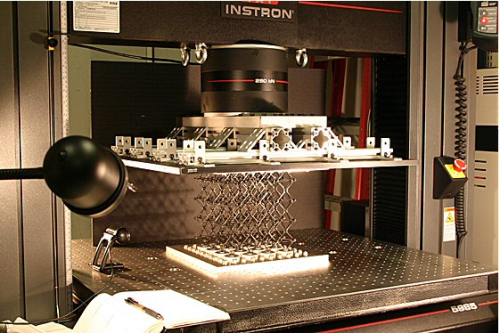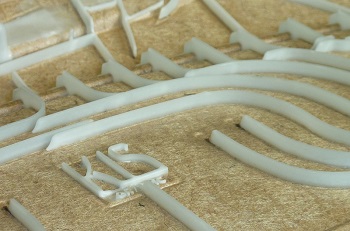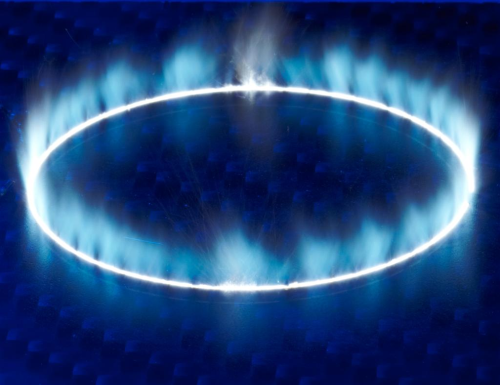 At the recently concluded China International General Aviation Convention 2011, SABIC Innovative Plastics presented lightweight solutions
At the recently concluded China International General Aviation Convention 2011, SABIC Innovative Plastics presented lightweight solutions
for the aviation industry, the Ultem polyetherimide (PEI) foam for composite aircraft structures and the Lexan XHR 6000 sheet for business and first-class seating and other interior components.
As introduced, Ultem foam products are available in three densities: XP060 is 60kg/m³, XP080 is 80kg/m³, and XP110 is 110kg/m³. They are manufactured as board for use in skin-core-skin composite structures. Applications include luggage bins, galleys and lower wall panels.
“By replacing competitive materials such as polymethacrylimide (PMI) with Ultem foam, OEMs and tiers can meet their environmental goals and industry challenges, while lowering system costs by streamlining processing and extending the application’s useful life,” said Kim Choate, Global Product Marketing Manager, Ultem, Innovative Plastics.
Testing was organized by SABIC to compare Ultem foam and PMI foam boards in an environmental chamber. Both materials were exposed to 70°C heating and 85% relative humidity. The results showed that the Ultem foam absorbed less than 0.5% moisture by weight at 1,000 hours. In contrast, PMI absorbed 5-6% moisture by weight at just 150 hours and maintained those results through 1,000 hours, according to the company.
Weight gain from moisture absorption adds to the overall weight of the aircraft, thus increasing fuel consumption and emissions. On average, an aircraft will burn about 0.03kg of fuel per hour for each kilogram carried on board. Given that the total commercial fleet flies about 57 million hours per year, cutting one kilogram per flight can save roughly 1,700 tons of fuel and 5,400 tons of carbon dioxide per year, SABIC explained.
Moisture absorption may also be disruptive on electronics may cause condensation on sensitive areas of the interior. The cycle of absorption and drying that occurs as the aircraft travels through different environmental conditions also has the potential to cause delamination of a composite structure and can distort the dimensions of a part, which can lead to more frequent repairs and downtime.
Another benefit of Ultem foam’s low moisture absorption occurs during processing, said SABIC. PMI foam boards usually need to be conditioned (dried and/or stored in a special area) before they can be used for production, adding time and costs. PMI may also have to undergo a multi-step annealing process. In contrast, Ultem foam can avoid these issues. It is compatible with metals and thermoset laminate materials, potentially eliminating adhesives and other secondary operations that are common to the aircraft industry.
As stated, Ultem foam has a density of 10 to 30 times less than the traditional resin. Its Flame-Smoke-Toxicity (FST) performance meets the US’s Ohio State University (OSU) performance levels below 50/50. It also has good dielectric and acoustic properties, including demonstrated noise reduction coefficients of greater than 0.3.
As for the Lexan XHR 6000 sheet, potential applications include seating, cockpit linings, windows surrounds, door shrouds, and other interior components.
“We understand that our aviation customers face multiple, often contradictory, pressures to increase safety, lower costs and improve their customers’ flying experience, and we made sure that our Lexan XHR sheet addressed all of them,” said Lennard Markestein, General Manager, North Asia region, Specialty Film & Sheet, Innovative Plastics. “With this material, it will be easier for OEMs and suppliers to produce attractive, lightweight, and compliant interiors for the next generation of aircraft while keeping costs down.”
The move to enlarge seating or sleeping areas on some aircrafts has caused additional interior components to fall under the OSU heat release standard, which applies to parts larger than two square feet. At the same time, new and retrofitted aircraft featuring fresh designs and aesthetics require materials that can provide colorability and creative freedom.
Lexan XHR 6000 sheet fully complies with the OSU 65/65 standard and FST regulations, avoiding the need for waivers, and provides better weight-out for fuel economy than traditional polyvinyl chloride (PVC) or acrylic sheet products, according to SABIC. It has a specific gravity of 1.34 vs 1.47 for OSU-compliant PVC/acrylic in addition to thin-wall forming possibility for weight reduction.
Besides, the opaque Lexan XHR 6000 sheet provides good colorability including bright whites and can be formed into deep draws, crisp angles and thin walls, stated the company. It also improves texture retention, and can be thermoformed at lower temperatures than polyphenylsulfone (PPSU) and PEI resin-based sheet products, enabling the use of lower-cost tooling and offering the potential to eliminate painting. Both of these characteristics help lower part cost and boost productivity, SABIC further introduced.
Source : www.adsalecprj.com







